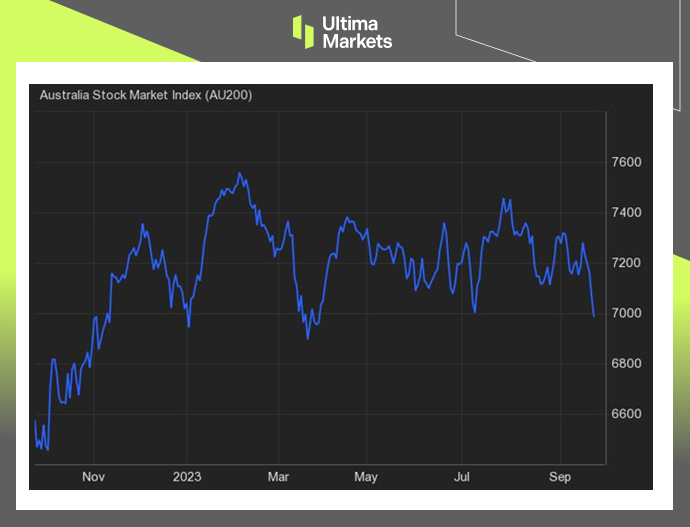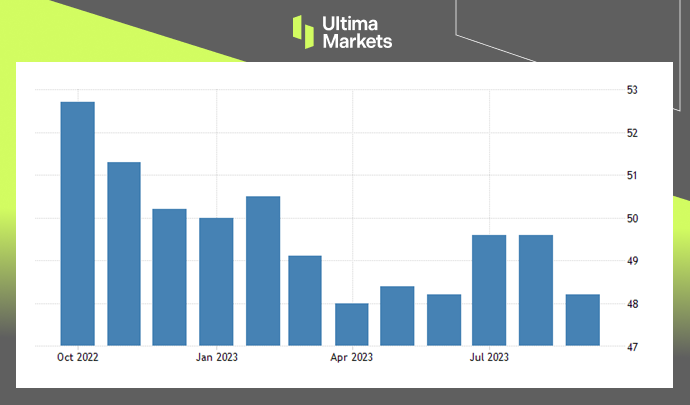
Decoding the ASX 200 Index Plunge: A Hierarchical Analysis
Main Point: ASX 200 Index’s Recent Decline
The ASX 200 Index tumbled 1.3% to below 7,000 on Sep. 22, hitting its lowest levels in six months and tracking losses on Wall Street overnight as the US Federal Reserve’s hawkish pause continued to weigh on investor sentiment.
The benchmark index is also on track to lose nearly 5% this week for its second consecutive weekly decline. Domestically, investors digested data showing Australia’s manufacturing activity contracted further in September, while services activity turned expansionary.
Impact on Key Sectors
Commodity-linked stocks led the decline with sharp losses from BHP Group (-2%), Rio Tinto (-2.3%), Fortescue Metals (-2.2%), Woodside Energy (-0.9%) and Newcrest Mining (-0.9%). Heavyweight financial, technology, and consumer-related firms slumped as well.

(ASX 200 Index daily chart)
The Judo Bank Flash Australia Manufacturing PMI
The Judo Bank Flash Australia Manufacturing PMI fell to 48.2 in September 2023, from 49.6 in the previous month, flash estimates showed. It pointed to the lowest reading in 4 months, indicating continued deteriorating business conditions across the sector.
Inflation and Pricing Strategies
A sharper fall in new orders led to manufacturing output shrinking for a tenth straight month in September. Consequently, firms reduced their purchasing activity and inventory holdings.
That said, employment levels rose with some manufacturers still facing a shortage of labor to support ongoing operations. Staffing constraints also led to a marginal lengthening of lead times.
Input cost inflation eased amid the drop in purchasing activity, while firms also raised their own selling prices at a slower rate.

(Judo Bank Australia Manufacturing PMI, S&P Global)
Implications and Conclusion
In conclusion, the ASX 200 Index’s recent nosedive results from a complex interplay of domestic and international factors.
The US Federal Reserve’s hawkish stance, along with domestic issues, especially the manufacturing sector’s contraction, has deepened economic uncertainties.
While challenges persist, businesses have demonstrated resilience in adapting to the evolving landscape.
In this volatile market, comprehending the intricacies of the ASX 200 Index’s journey is vital for investors and analysts alike.
Disclaimer
Comments, news, research, analysis, price, and all information contained in the article only serve as general information for readers and do not suggest any advice. Ultima Markets has taken reasonable measures to provide up-to-date information, but cannot guarantee accuracy, and may modify without notice. Ultima Markets will not be responsible for any loss incurred due to the application of the information provided.
Why Trade Metals & Commodities with Ultima Markets?
Ultima Markets provides the foremost competitive cost and exchange environment for prevalent commodities worldwide.
Start TradingMonitoring the market on the go
Markets are susceptible to changes in supply and demand
Attractive to investors only interested in price speculation
Deep and diverse liquidity with no hidden fees
No dealing desk and no requotes
Fast execution via Equinix NY4 server









